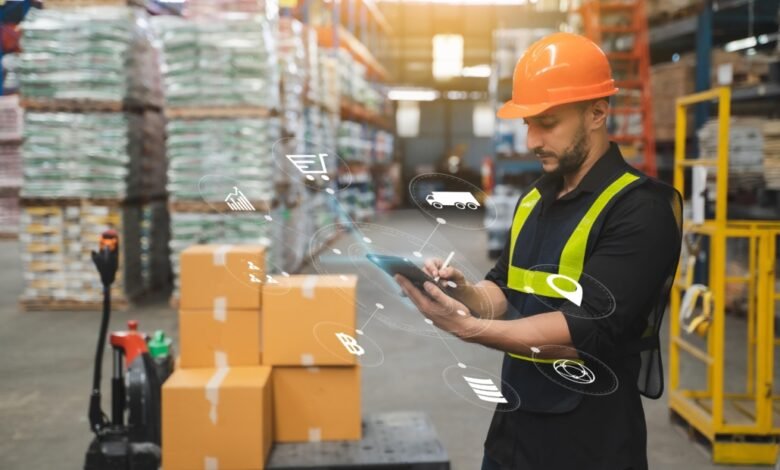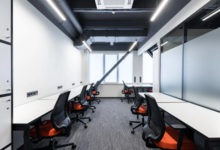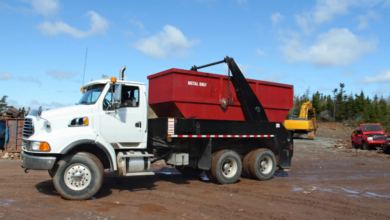Rethinking E-commerce Fulfilment: Balancing Speed, Accuracy, and Cost in Last-Mile Delivery

The chime of a new order is a sweet sound for any e-commerce business. But what happens after that click? The journey from “add to cart” to “delivered to your door” is complex, and for many businesses, it’s the last mile of delivery that presents the biggest challenge.
In the world of ecommerce fulfilment, it is crucial to strike the right balance between speed, accuracy, and cost. It’s not just about getting the product to the customer; it’s about delivering an experience that builds loyalty and drives repeat business.
The Last-Mile Conundrum: More Than Just Delivery
Think about your own online shopping experiences. What do you value most? Often, it’s a combination of getting your item quickly, receiving the right item, and not paying an exorbitant shipping cost. These three pillars – speed, accuracy, and cost – are the cornerstones of successful last-mile delivery, yet they often seem to be in direct competition with one another. Trying to maximise one can easily compromise the others.
For years, the focus was almost singularly on speed. Next-day, same-day, and even two-hour delivery became the holy grail. However, chasing speed at all costs can lead to inefficiencies, increased errors, and ultimately, a negative impact on your bottom line.
Conversely, prioritising only cost can mean slow delivery times and a frustrated customer base. And if accuracy is compromised, all the speed and cost-saving in the world won’t matter when your customer receives a cat collar instead of the smartwatch they ordered.
The real art of ecommerce fulfilment lies in finding that sweet spot where all three elements can thrive, creating a sustainable and customer-centric delivery model.
Beyond the Warehouse: The Evolving Landscape of Fulfilment
Ecommerce fulfilment used to be a relatively straightforward affair: store products in a central warehouse, pick, pack, and ship. Today, the landscape is far more dynamic. Customers expect flexibility and transparency. This has led to an explosion of new strategies and technologies designed to optimise the last mile.
The Rise of Distributed Inventory
One of the most significant shifts has been towards distributed inventory. Instead of a single, massive warehouse, businesses are now strategically placing smaller fulfilment centres or even micro-fulfilment hubs closer to their customers.
Imagine having your products stored in a network of smaller facilities spread across a city or region. This drastically reduces the distance goods need to travel for the final leg, directly impacting speed and potentially lowering shipping costs.
This approach not only accelerates delivery but also provides greater resilience. If one facility experiences an issue, others can step in to cover the shortfall. It represents a fundamental shift in how we think about storage and distribution, transitioning from a centralised model to a more decentralised, agile network.
Utilising Local Resources: The Power of Brick-and-Mortar
The lines between online and offline retail are blurring, and smart e-commerce fulfilment strategies are embracing this shift. Brick-and-mortar stores, once seen as separate entities, are now being integrated into the last-mile solution. Concepts like “BOPIS” (Buy Online, Pick Up In Store) and “ship from store” are gaining traction.
Think about it: if a customer orders an item that’s available at a local store, why ship it from a distant warehouse? Utilising store inventory for online orders reduces shipping costs, speeds up delivery, and can even drive foot traffic into the physical store. This coordination between online and offline assets is a powerful tool in optimising the last mile.
The Gig Economy and Crowdsourced Delivery
The rise of the gig economy has also had a profound impact on last-mile delivery. Companies are increasingly partnering with independent drivers or using crowdsourced delivery platforms to handle a portion of their deliveries. This offers unparalleled flexibility, especially during peak seasons or for urgent deliveries.
This model allows businesses to scale their delivery capacity up or down as needed, without the fixed costs associated with maintaining a large in-house fleet. It can be particularly effective for same-day or hyperlocal deliveries, where traditional carriers might not be as efficient or cost-effective.
Technology as the Accelerator, Not the Driver
While new strategies are crucial, technology acts as the ultimate enabler in modern e-commerce fulfilment. However, it’s vital to remember that technology should be an accelerator of your strategy, not the sole driver. Simply throwing tech at a problem without a clear vision will likely lead to more complexity, not less.
Smart Routing and Optimisation
Gone are the days of static delivery routes. Modern logistics software utilises sophisticated algorithms to optimise delivery routes in real-time, taking into account factors such as traffic, delivery windows, and vehicle capacity. This results in more efficient resource utilisation, fewer miles driven, and ultimately, lower costs and faster deliveries.
Imagine a delivery driver’s route being dynamically adjusted in response to sudden traffic jams or new urgent orders. This level of responsiveness is only possible with advanced routing and optimisation tools.
Real-time Tracking and Transparency
Customers today expect to know where their package is at every step of its journey. Real-time tracking, powered by GPS and integrated systems, provides this much-needed transparency. This not only enhances the customer experience but also reduces the number of “Where is my order?” inquiries, freeing up customer service resources.
Implementing real-time tracking can reduce delivery delays by up to 58% and decrease customer claims by as much as 25%. When customers feel informed, they feel more in control and have greater trust in the brand. This transparency is a cornerstone of building a positive post-purchase experience.
Automation and Robotics
Within fulfilment centres, automation and robotics are playing an increasingly significant role. From automated storage and retrieval systems to robotic pickers, these technologies can dramatically increase efficiency and accuracy in the warehouse.
While the initial investment can be substantial, the long-term benefits, including reduced labour costs, increased throughput, and fewer errors, can be immense. This frees up human workers to focus on more complex tasks, further enhancing overall operational efficiency.
Striking the Balance: A Holistic Approach to Ecommerce Fulfilment
The true art of “Rethinking E-commerce Fulfilment: Balancing Speed, Accuracy, and Cost in Last-Mile Delivery” lies in adopting a holistic approach. There’s no one-size-fits-all solution. What works for a small local boutique might not be suitable for a large national retailer.
Here are some key considerations for finding your balance:
- Understand Your Customer: Who are your customers, and what are their expectations? Are they willing to pay a premium for faster delivery, or is cost their primary concern? Tailoring your delivery options to your customer segments is crucial.
- Analyse Your Product Mix: Do you sell small, high-value items or bulky, low-margin products? The nature of your products will influence your optimal storage, packing, and shipping strategies.
- Utilise Data: Data is your most valuable asset. Analyse your past delivery performance to identify bottlenecks and understand where costs are escalating. Data-driven decisions are always the most effective.
- Embrace Flexibility: The e-commerce landscape is constantly evolving. Be prepared to experiment with different delivery models, technologies, and partnerships. What works today might not work tomorrow.
- Build Strong Partnerships: Whether it’s with your shipping carriers, technology providers, or local delivery partners, strong relationships are essential. Collaborate closely to ensure seamless integration and efficient operations.
- Continuous Improvement: Ecommerce fulfilment is not a “set it and forget it” operation. Regularly review your processes, solicit customer feedback, and look for opportunities to refine and improve.
The Future of Last-Mile Delivery: Innovation on the Horizon
The journey of last-mile delivery is far from over. We’re already seeing exciting innovations on the horizon, from drone deliveries in specific scenarios to autonomous vehicles and hyper-localised delivery networks. The focus will continue to be on shrinking delivery windows, increasing predictability, and making the entire experience as seamless and sustainable as possible.
As businesses, our goal in ecommerce fulfilment isn’t just to move boxes; it’s to create delightful experiences. By strategically balancing speed, accuracy, and cost in the last mile, we can not only meet customer expectations but exceed them, building lasting relationships and driving the future of online retail. It’s an exciting time to be at the forefront of this transformation.







